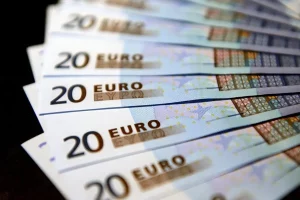Introduction
In a noteworthy development, the Eurozone experiences a slowdown in inflation, recording a rate of 2.6% in February. This article explores the multifaceted factors behind the deceleration, analyzes the implications for the Eurozone economy, and examines potential responses from policymakers as they navigate the ever-changing landscape of inflationary trends.
The Deceleration: Understanding the Numbers
The article begins by dissecting the recent inflation figures, providing a nuanced understanding of the 2.6% rate recorded in February. Expert analyses and insights from economists contribute to unraveling the intricacies of the deceleration and its potential impact on various sectors of the Eurozone economy.
Contributing Factors: Unraveling the Causes

A deeper dive into the contributing factors behind the slowdown in inflation is essential. The article investigates elements such as consumer spending patterns, energy prices, and global economic conditions, painting a comprehensive picture of the forces at play in shaping the inflationary trends within the Eurozone.
Economic Implications: Ripples Across Sectors
As inflation eases, the article explores the broader implications for various sectors within the Eurozone economy. From manufacturing and consumer goods to employment and investment, each sector is examined to understand how the evolving inflation dynamics may influence economic activities and market sentiments.
Consumer Sentiment: Impact on Spending Habits

With inflation slowing, the article delves into the potential impact on consumer sentiment and spending habits. Interviews with consumers, surveys, and expert opinions provide insights into how individuals and households may respond to the changing inflationary landscape, shaping economic behavior in the coming months.
Monetary Policy Responses: Central Bank Strategies
As inflation takes a step back, attention turns to the responses of central banks and policymakers. The article explores potential strategies employed by the European Central Bank (ECB) and other Eurozone monetary authorities to manage inflation expectations, stimulate economic growth, and maintain stability in the financial markets.
Market Reactions: Investors and Financial Institutions

The slowdown in inflation triggers reactions within financial markets. The article assesses how investors and financial institutions respond to the changing inflationary landscape, considering potential shifts in investment strategies, asset allocations, and risk perceptions amid evolving economic conditions.
Global Context: Eurozone in the International Arena
In the context of a globally interconnected economy, the article examines how the Eurozone’s inflation slowdown fits into the broader international economic landscape. Insights from global economists and experts provide a comparative perspective on how the Eurozone’s inflationary trends align with or diverge from global economic conditions.
Future Projections: Navigating Uncertainties
The article concludes by exploring future projections for Eurozone inflation, recognizing the inherent uncertainties in economic forecasting. Expert opinions and analyses contribute to a forward-looking perspective, offering insights into the potential trajectories of inflation within the Eurozone in the coming months and years.
Conclusion: Adapting to Economic Shifts
As the Eurozone experiences a slowdown in inflation, the article encapsulates the complexities and implications of this economic shift. From policy responses to market dynamics and global considerations, stakeholders within and beyond the Eurozone are urged to adapt to the evolving landscape of inflation and its ramifications for economic activities.




